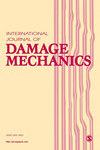基于累积疲劳损伤新方法的转向架框架五维数字孪生模型
IF 3.9
2区 工程技术
Q2 MATERIALS SCIENCE, MULTIDISCIPLINARY
引用次数: 0
摘要
轨道车辆转向架框架的疲劳破坏主要是复杂载荷条件下的非线性疲劳损伤。作为推进轨道交通数字化的关键技术之一,基于数字孪生的转向架车架非线性疲劳损伤评估研究正在展开。针对这种情况,建立了具有累积疲劳损伤新方法的转向架车架五维数字孪生模型。为了提高数字孪生模型中疲劳损伤评估的准确性,将生态系统中有机物的分解与材料力学性能的退化进行类比,提出了一种改进的Manson-Halford非线性累积分析模型。此外,基于物理规划和粒子群优化,提高物理实体与虚拟实体映射的效率。所提出的数字孪生模型独特地融合了数据驱动和力学驱动的方法,为转向架框架的结构设计和耐久性优化提供了强大的解决方案。本文章由计算机程序翻译,如有差异,请以英文原文为准。
A five-dimensional digital twin model of bogie frame with a new approach for accumulation fatigue damage
The fatigue failure of the rail vehicle bogie frame is primarily attributed to nonlinear fatigue damage under complex loading conditions. As one of the key technologies for promoting digitization in the field of rail transport, the related studies focusing on nonlinear fatigue damage assessment of the bogie frame based on a digital twin are being developed. In response to this case, a five-dimensional digital twin model of the bogie frame with a new approach for accumulation fatigue damage is established. To enhance the accuracy of the fatigue damage assessment in the digital twin model, an improved Manson–Halford nonlinear cumulative analytical model is presented based on the analogy between the decomposition of organic matter in ecology and the degradation of mechanical properties of materials. Additionally, to boost the efficiency of mapping between the physical entity and the virtual entity based on physical programming and particle swarm optimization. The proposed digital twin model uniquely merges data-driven and mechanics-driven methodologies, offering a robust solution for the structural design and durability optimization of the bogie frame.
求助全文
通过发布文献求助,成功后即可免费获取论文全文。
去求助
来源期刊

International Journal of Damage Mechanics
工程技术-材料科学:综合
CiteScore
8.70
自引率
26.20%
发文量
48
审稿时长
5.4 months
期刊介绍:
Featuring original, peer-reviewed papers by leading specialists from around the world, the International Journal of Damage Mechanics covers new developments in the science and engineering of fracture and damage mechanics.
Devoted to the prompt publication of original papers reporting the results of experimental or theoretical work on any aspect of research in the mechanics of fracture and damage assessment, the journal provides an effective mechanism to disseminate information not only within the research community but also between the reseach laboratory and industrial design department.
The journal also promotes and contributes to development of the concept of damage mechanics. This journal is a member of the Committee on Publication Ethics (COPE).
 求助内容:
求助内容: 应助结果提醒方式:
应助结果提醒方式:


